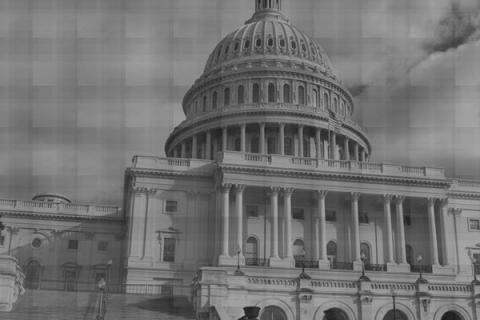Dollars per Vote: Click on a District to View the Breakdown by Candidate
Campaign funding is a significant factor in determining whether a candidate will make it past the primary election. In the map above, the 'dollars-per-vote' is calculated by dividing a candidate's total net disbursements (provided by the FEC) through June's primary election by the number of votes received. This variable indicates how much money was required to win a spot in California's first head-to-head general election.
California's 'Top-Two' Open Primary resulted in several partisan candidates bidding in opposition to their own party, or no party at all. The general election in California this November will see four non-partisan congressional candidates race head-to-head against a major party candidate in four different districts.
Purple Districts: Those that will have a Non-partisan Contestant
Four congressional districts will contain races in which a non-partisan candidate will be on the ballot. Each district appears in purple in the map above. These non-partisans, with the exception one, Bill Bloomfield in District 33, faced a single-party slate of opposition candidates in the primary. However, they will all will face a significantly funded opponent in the general.
(1) California's 13th congressional district, which includes Alameda County, Oakland and UC Berkeley, will have non-partisan candidate Marilyn Singleton, who spent just $2.25 per vote received in the primary, face off against incumbent Rep. Barbara Lee's (D), who spent $8.06 per vote and received 83.1%. This will be a very difficult race for Singleton without the benefit of significant funding.
(2) Non-partisan candidate Terry Phillips will be on the ballot in the 23rd congressional district. He spent $1.07 per vote for 17.3% against incumbent Rep. Kevin Mc Carthy's (R), who received 72.2% of the vote at a whopping $40.34 per vote. Terry Phillips, a famed international journalist, was the victim of a highly publicized employment termination with National Public Radio during a series of scandals in 2011 involving NPR and faces an uphill battle in his bid for the congressional seat.
(3) David Hernandez, a non-partisan candidate who spent just $0.43 per vote and received 21.7% in his primary run against Democrat and Los Angeles City Council Member Tony Cardenas will be on the ballot in the 29th Congressional District. Cardenas spent $14.67 per vote and got 64.4% in the Primary.
(4) The most interesting race will be the battle for the 33rd District. The beach side communities of Los Angeles County will see a well funded non-partisan candidate, Bill Bloomfield face long-time partisan incumbent Rep. Henry Waxman's (D). Bloomfield spent $50.27 per vote and received 24.6% of the total votes cast. Although Waxman only spent $10.88 per vote and received 45.3%. However, he will be heavily funded by the Domocratic Party in the general election should Bloomfield pose a credible challenge. Another interesting statistical factor was that two substantially funded third party candidate, a Libertarian and a Green Party candidates, spent nearly $200,000 each and each received under 5% of the vote.
Blue and Red Districts: Two Democrats or Two Republican Contestants
Several Congressional Districts in California this fall will engage in single-party candidate races.
Of the 53 Congressional Districts, 7 Districts will have two Democratic Party Candidates face each other. These Democratic Congressional Districts appear on the map above in Blue and include the 2nd, 15th, 30th, 35th, 40th, 43rd, and 44th districts. In the newly drawn 30th Congressional District, incumbent Howard Berman spent over $130 per vote in his bid against incumbent Brad Sherman of the former 27th District. Sherman spent $67.92 per vote.
Two congressional districts will see a Republican face off against another Republican. In the City of San Bernardino's 31st District, incumbent Rep. Gary Miller (R) spent $51.31 per vote in the Primary and will face Sen. Bob Dutton (R), who spent just $8.89 per vote. Desert communities in the 8th Congressional District will be able to vote for either Assembly Member Paul Cook (R) or Republican challenger Gregg Imus.
Ian Dawes is a data analyst for IVC Media LLC, a political marketing and consulting firm.
'Dollars per vote' were computed from expenditure data provided by the Federal Election Commission.Candidate images were sourced from Project Vote Smart
